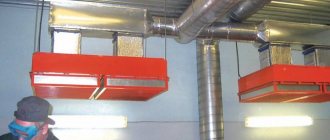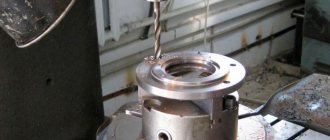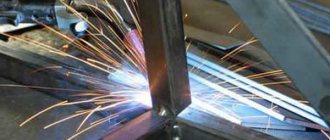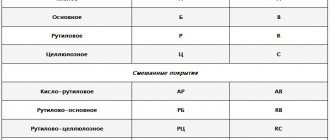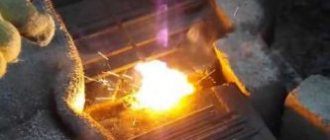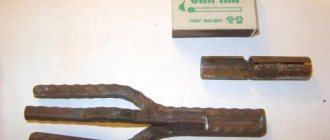general information
Electric arc welding is a method of joining metals that is based on the use of an electric arc. The arc heats and melts the metal, allowing a weld to be formed. Can reach temperatures over 6000 degrees. This is sufficient to melt most existing types of metals.
Electric arc technology is widely used in welding and cutting metals. It can be manual, semi-automatic and automatic.
Health and Safety
When cutting metals, the air environment of production premises can become polluted with aerosols containing dust, harmful gases and vapors (gaseous fluoride and chloride compounds, carbon monoxide, nitrogen oxides, ozone), as well as metal oxides. The use of an open gas flame, open arcs and plasma jets, the presence of splashes of liquid metal and slag during cutting not only create the possibility of burns, but also increase the risk of fires. The operation of electron beam installations is associated with the formation of soft x-rays.
Powerful ultraviolet or light radiation from a welding arc and plasma when exposed to the eyes of a worker can cause electroophthalmia, and with prolonged exposure to infrared radiation, clouding of the lens can develop - cataracts.
Electric arc welding technology
Electric arc welding technology is simple. The welding machine is connected to the network. One cable is connected to the part, and the second to the electrical holder with the electrode. The end of the electrode is tapped on the surface of the metal, exciting an arc. An arc is formed between the electrode and the metal being welded. The arc instantly begins to give off heat, melting the edges of the metal and the electrode itself (if it is consumable). As a result, a weld pool is formed.
It mixes the molten electrode and the base metal. They fill the joint between two parts, and after cooling, a strong, permanent connection is formed. In this case, so-called slag can form on the surface of the weld. To perform welding, you can use consumable and non-consumable electrodes or wire. The choice depends on the arc welding technology you choose. For example, in manual arc welding, consumable electrodes are most often used. And for semi-automatic welding - consumable or non-consumable wire.
If you do not know how to maintain a stable arc, you can use special electrodes or welding wire. They must contain sodium, potassium or calcium. These elements stabilize the arc due to their ionizing properties.
Shielding gas can be used to protect the welding area from oxidation. For example, argon or carbon dioxide. Such gases are supplied directly to the weld pool, protecting it from oxygen from the atmosphere.
Electric arc welding can be carried out with both direct and alternating current. We recommend using direct current, since the metal will splatter less and the seam will be of much better quality. If you are a beginner, then DC operation is a must.
Gas cutters
Dismantling metal structures and cutting rolled products is impossible without a gas cutter. Models of such a device have the same operating principle, but differ in size, design, and the presence of additional parts. Using a gas cutter, you can work with workpieces of large thickness. Cutting occurs due to the fact that the combustion temperature is less than the melting temperature.
The process is conventionally divided into periods:
Gas cutter
- The treated area is heated to the desired temperature. To produce a flame, oxygen is mixed with a flammable substance in a certain dosage.
- Oxygen promotes deoxidation of the metal, combustion products are removed from the working area.
There are two types of gas cutter design:
- Injection - two-pipe, when technical oxygen is divided into two streams.
- Injectorless, or three-pipe, in which the oxygen and gas flow moves through different tubes, mixing inside the head.
Electric arc cutting of metals
Metal cutting using arc welding is one of the oldest cutting methods. There is manual arc cutting using a consumable or non-consumable electrode and air and oxygen-arc cutting. Let's take a closer look at each of the methods.
Non-consumable electrode cutting
Let's start with a little used, but still used method. Cutting with non-consumable electrode. A graphite or carbon rod is used as an electrode; cutting is performed using any type of current, but with straight polarity. The current strength should not exceed 800A. To cut metal, it must first be heated with an arc and then smelted.
Why is this method little used? The point is that it is only applicable in special cases. For example, when cutting scrap or dismantling old metal structures. In short, for working with complex large-sized projects. There is also no need to talk about the beauty of the cut. The work turns out uneven and sloppy. But this method can cut any metals: from cast iron to non-ferrous metals.
Consumable electrode cutting
But cutting with a consumable electrode is perhaps the most common method of electric arc cutting. The cut is much neater and smoother than when using the previous method. To perform cutting, set a higher amperage (30 percent more than when welding). You can focus on the thickness of the electrode. For a rod 1 millimeter thick, set the current to approximately 50A. For a 2 mm rod - 100A. And so on. The metal itself must be heated with deep penetration. This heating method is also called the “support method”. Can cut most metals.
To perform a simple cut at home, you can use any consumable electrodes. But to achieve better results, use special electrodes for cutting metal. Usually special electrodes have a special coating. Thanks to it, the welding process is faster and easier.
But despite the improved cut quality, it is still far from ideal. If we compare this method of cutting metals with more technologically advanced ones, it will lose in everything. Starting from the quality of the cut, ending with its aesthetic characteristics. At the same time, the cutting process itself is very slow.
Air and oxygen arc cutting
Air-arc and oxygen-arc cutting of metal using electric arc welding have no differences, except for one thing. In air cutting, the metal is first melted by the heat of the arc, and then it is blown out using compressed air. When using oxygen cutting, the technology is the same, but instead of air, an oxygen flow is used.
This cutting method is used when working with stainless steel sheets. In this case, the thickness of the sheet should not exceed 20 millimeters. Also, such cutting methods are used to remove defective parts from a part.
To perform such cutting, you need to set the welding machine to constant current and select graphite electrodes. Tubular electrodes can also be used. When using tubular electrodes, oxygen is supplied through a through hole in the welding rod. The method is effective, but labor-intensive. It is much easier to apply compressed air or a stream of oxygen directly to the incision site.
Kinds
All metal cutting technologies are divided into two large groups:
- mechanical;
- thermal.
Mechanical ones are based on the separation of metal by exposing it to cutting surfaces made of a more durable material. These include:
- saws;
- guillotine and sheet shears;
- hydraulic cutting.
In hydraulic cutting, separation occurs through the action of a thin jet of water under high pressure.
Thermal cutting methods are based on melting the metal at the cut line using heat. These include:
- gas;
- plasma;
- laser
The cutting method is selected based on the thickness of the workpiece, the metal or alloy of the workpiece, its thickness, the amount of work, the location of the cutting and a number of other parameters. Many craftsmen tell how to cut metal with a welding inverter. This type of cutting by electric welding is inefficient, has a high waste rate and low accuracy.
Backfire. What is this?
Backfire involves an almost instantaneous change in the movement of the flame in the opposite direction. The effect appears when the combustion rate exceeds the outflow of gases inside the sleeve. In this case, the burner flame goes inside the mouthpiece and is rapidly directed through the sleeve into the cylinder, which can be the main reason for its rupture. The phenomenon is often accompanied by loud bangs and smoke. Therefore, every specialist must be aware of the main signs of possible danger:
disappearance of the flame, appearance of black smoke from the mouthpiece; • the flame is present, but is accompanied by loud bangs; • the combustion process stops and no smoke is observed.
Of all the listed signs, the last option is considered the most dangerous. After all, due to the backlash during cutting, an explosion can occur, which will cause a lot of destruction, injury and even death. To prevent the occurrence of such phenomena, it is necessary to take a number of actions. First of all, you should shut off the oxygen and gas supply. You will also need to check the pressure in the cylinders. After the burner has completely cooled down, the mouthpiece must be cleaned of carbon deposits and other dirt that adheres inside. When popping, the tightness and integrity of all hoses are additionally checked.

